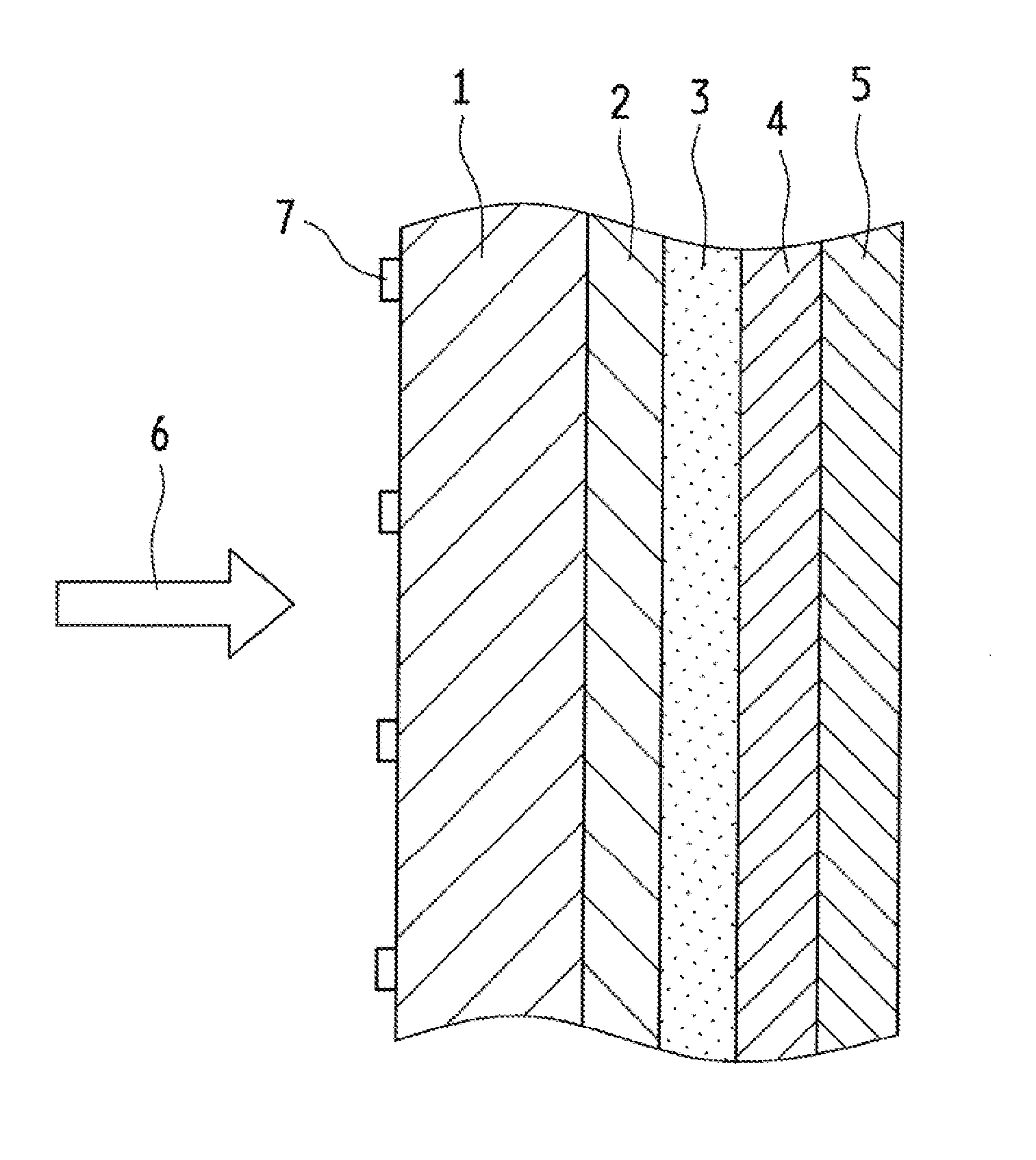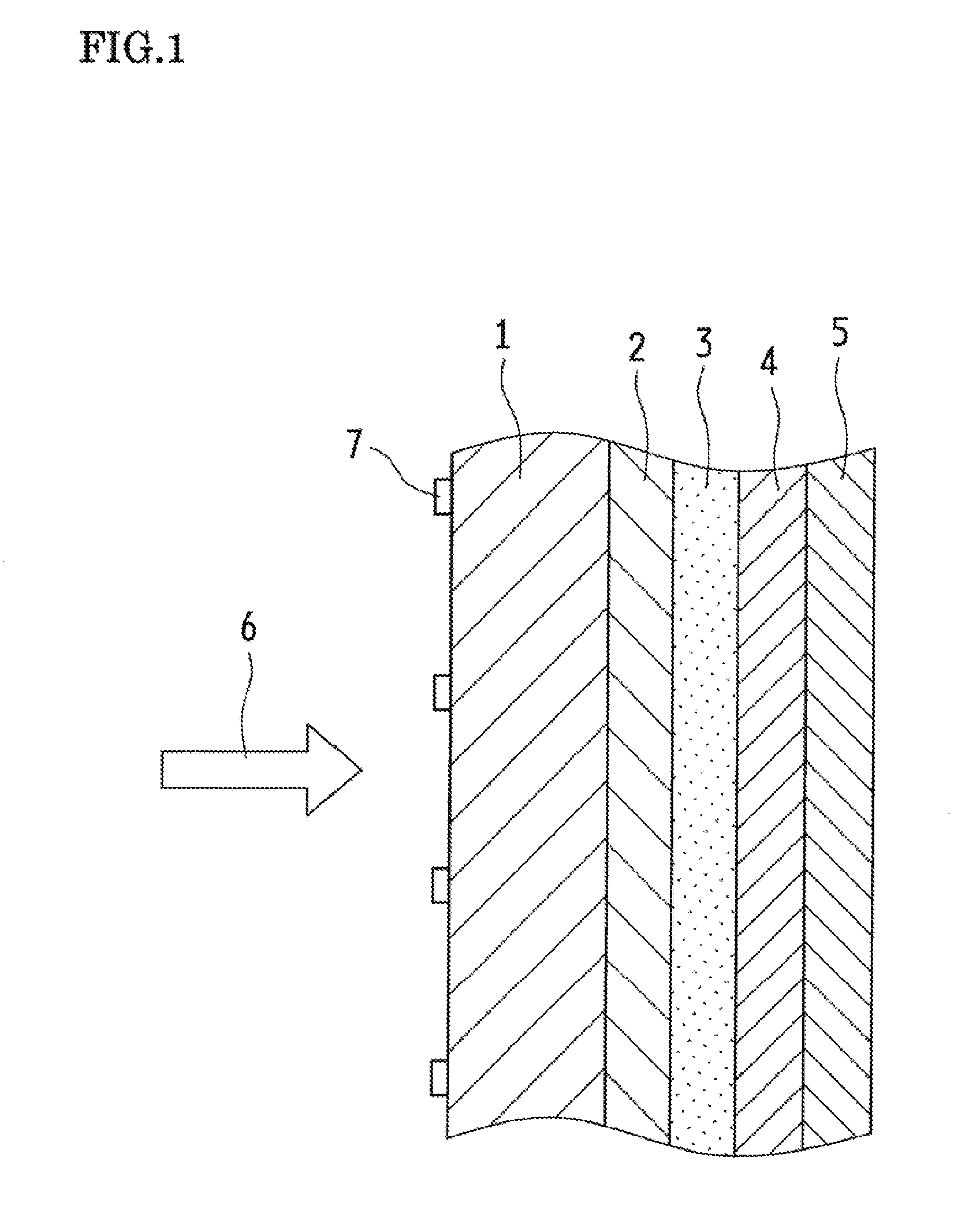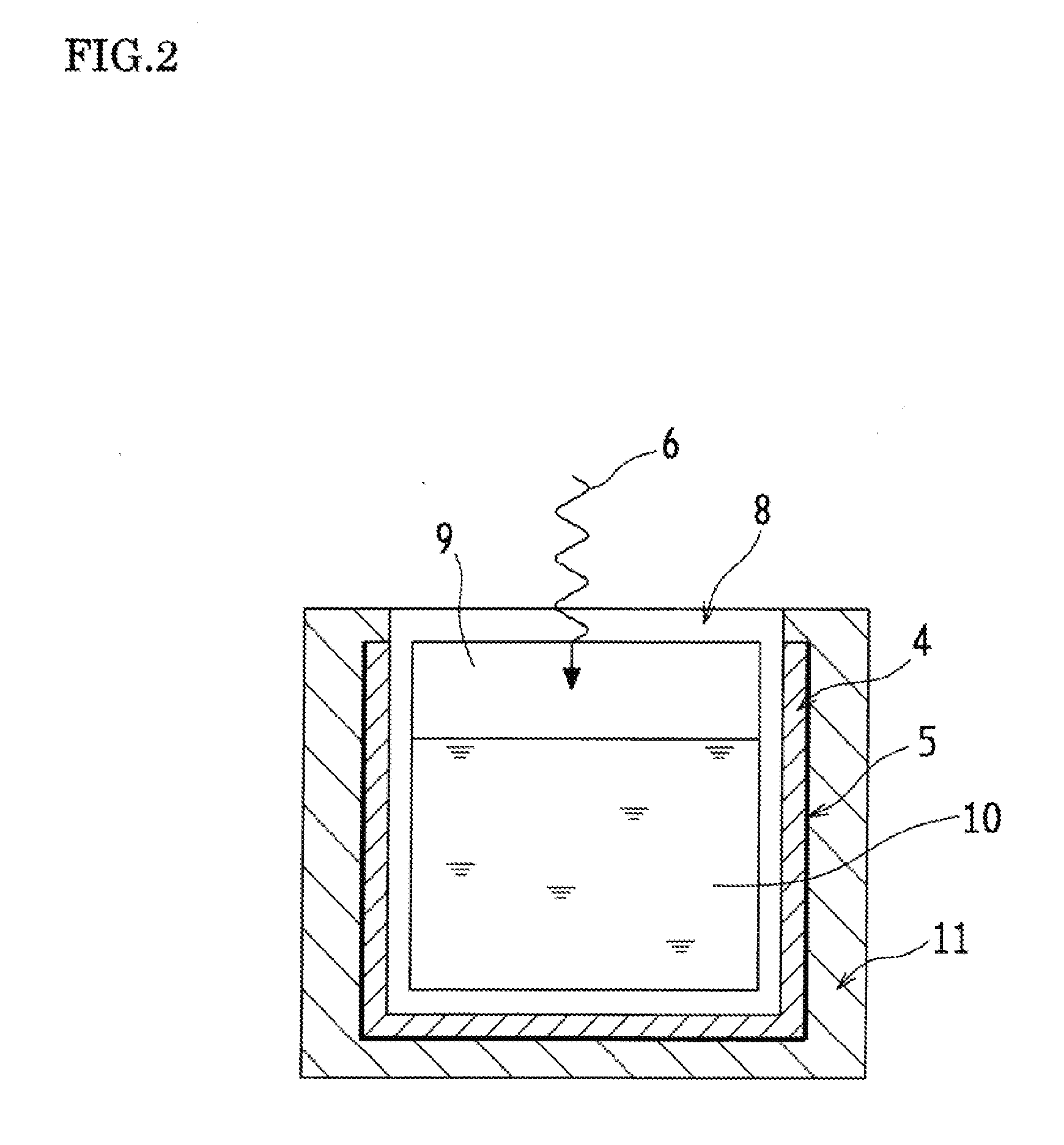Optical Wavelength Conversion Element Containing Ionic Liquid, And Article Equipped With Said Optical Wavelength Conversion Element
- Summary
- Abstract
- Description
- Claims
- Application Information
AI Technical Summary
Benefits of technology
Problems solved by technology
Method used
Image
Examples
synthesis example 2
of Organic Photosensitizing Molecules (A)
[0174]The organic photosensitizing molecules (A) (2,6-diiodo-1,3,5,7-tetramethyl-8-phenyl-4,4-difluoroboradiazaindacene) of
[0175]was synthesized by a method described in Non-patent Document 6. The obtained compound was identified by the following NMR spectroscopy.
[0176]1H NMR (400 MHz, CDCl3): δ 7.54-7.51 (m, 3H), 7.26-7.24 (m, 2H), 2.65 (s, 6H), 1.38 (s, 6H)
[0177]13C NMR (100 MHz, CDCl3): δ 156.9, 145.5, 141.5, 134.4, 129.7, 129.6, 127.9, 85.8, 17.1, 16.2
preparation example 1
of Ionic Liquid (C)
[0178]A commercial product (manufactured by Ionic Liquids Technologies GmbH) of a water-immiscible ionic liquid, 1-propyl-2,3-dimethylimidazolium bis(trifluoromethylsulfonyl)imide (CAS Number: 169051-76-7; “Ionic Liquid #1”), was taken in a glass vial. To this commercial product of the Ionic Liquid #1 taken in the vial was added a volume of ultrapure water that is 9 times as much as the volume of the commercial product. This mixture was then stirred using a general-purpose magnetic stirrer and a stirring bar and let to stand (the commercial product was washed with a volume of ultrapure water that is 9 times as much as the volume of the commercial product). As a result, the contents of the glass vial separated into a layer of the ionic liquid on the bottom of the glass vial and an aqueous layer atop the layer of the ionic liquid. Thereafter, the aqueous layer was extracted for measurement of the pH thereof (the pH of the water resulting from the washing), which was...
preparation example 2
of Ionic Liquid (C)
[0181]The same process as the process performed in Preparation Example 1 of the ionic liquid (C) (3 rounds of washing of the ionic liquid with a volume of ultrapure water that is 9 times as much as the volume of the ionic liquid (C) (followed by stirring and removing of an aqueous layer)) was performed, except that a commercial product (manufactured by Ionic Liquids Technologies GmbH) of another water-immiscible ionic liquid, 1-butyl-2,3-dimethylimidazolium bis(trifluoromethylsulfonyl)imide (CAS Number: 350493-08-2; “Ionic Liquid #2”), was used in place of the commercial product of the Ionic Liquid #1 used in Preparation Example 1 of the ionic liquid (C). As a result, the pH of the aqueous layer removed in the third washing (pH of the water resulting from the washing) was 6.4, and the Ionic Liquid #2 (ionic liquid (C)) was obtained.
PUM
| Property | Measurement | Unit |
|---|---|---|
| Wavelength | aaaaa | aaaaa |
| Wavelength | aaaaa | aaaaa |
| Efficiency | aaaaa | aaaaa |
Abstract
Description
Claims
Application Information
 Login to View More
Login to View More - R&D
- Intellectual Property
- Life Sciences
- Materials
- Tech Scout
- Unparalleled Data Quality
- Higher Quality Content
- 60% Fewer Hallucinations
Browse by: Latest US Patents, China's latest patents, Technical Efficacy Thesaurus, Application Domain, Technology Topic, Popular Technical Reports.
© 2025 PatSnap. All rights reserved.Legal|Privacy policy|Modern Slavery Act Transparency Statement|Sitemap|About US| Contact US: help@patsnap.com



